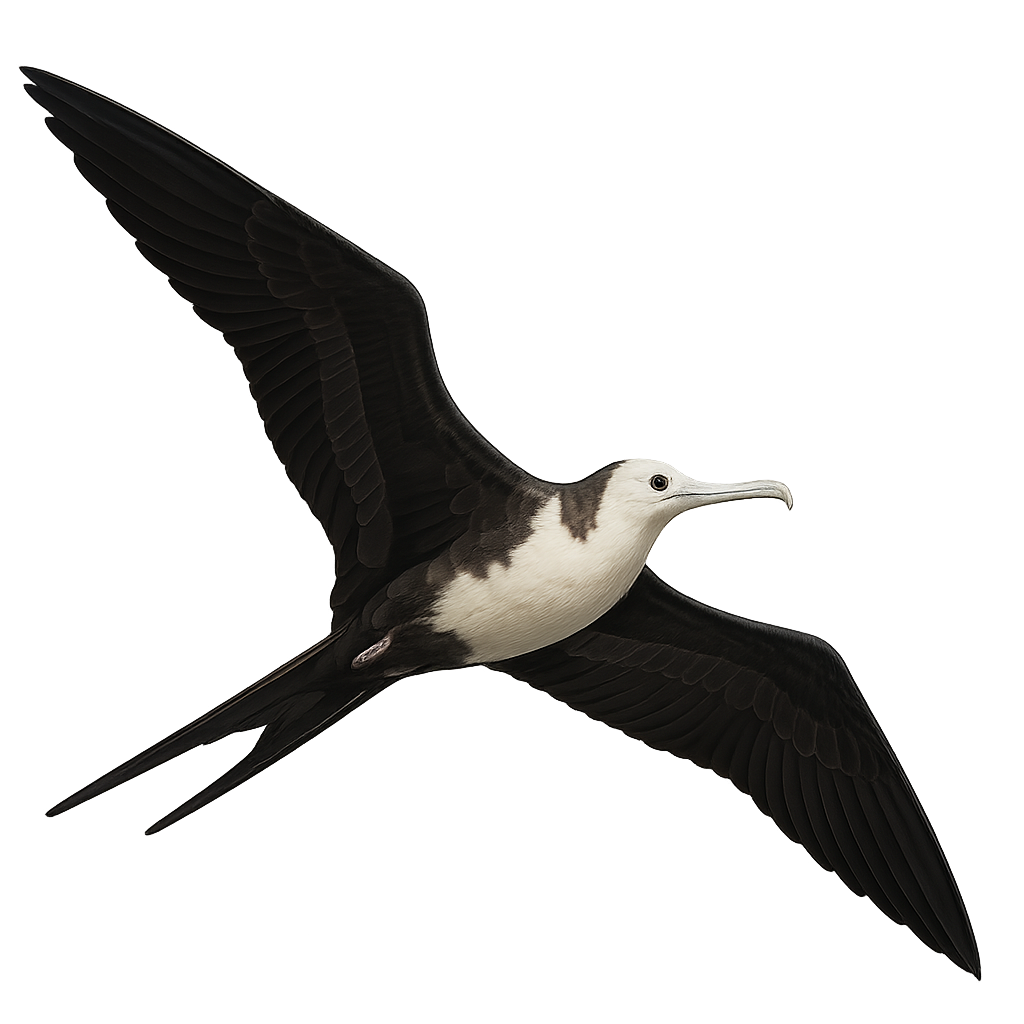Your wildlife photography guide.
Explore the ascension frigatebird in detail, study its behavior, prepare your shots.
Where to observe and photograph the ascension frigatebird in the wild
Learn where and when to spot the ascension frigatebird in the wild, how to identify the species based on distinctive features, and what natural environments it inhabits. The WildlifePhotographer app offers tailored photography tips that reflect the ascension frigatebird’s behavior, helping you capture better wildlife images. Explore the full species profile for key information including description, habitat, active periods, and approach techniques.
Ascension Frigatebird
Scientific name: Fregata aquila

IUCN Status: Vulnerable
Family: FREGATIDAE
Group: Birds
Sensitivity to human approach: Suspicious
Minimum approach distance: 10 m
Courtship display: January to March
Incubation: 50-55 jours
Hatchings: February to May
Habitat:
Tropical islands, coastal areas
Activity period :
Primarily active during the day, with peak activity in the morning and late afternoon.
Identification and description:
The Ascension Frigatebird, scientifically known as Fregata aquila, is an impressive seabird renowned for its ability to fly long distances without landing. It boasts a wingspan of up to 2.3 meters, allowing it to effortlessly glide over oceans. Its plumage is predominantly black with metallic sheen, and males display a bright red gular pouch that they inflate to attract females. These birds primarily nest on Ascension Island, where they form large colonies. They mainly feed on fish and squid, which they skillfully snatch from the water. Their lifestyle is closely tied to ocean currents and climatic conditions, making them vulnerable to environmental changes.
Recommended lens:
400mm – adjust based on distance, desired framing (portrait or habitat), and approach conditions.
Photography tips:
To photograph the Ascension Frigatebird, it is advisable to use a 400mm lens or longer to capture precise details of this bird in flight. The best opportunities often arise in the early morning or late afternoon when the light is softer. Try to capture the bird in full flight, highlighting its impressive wingspan and bright red gular pouch. Be patient and wait for the right moment to achieve a dynamic and well-composed image.
The WildlifePhotographer App is coming soon!
Be the first to explore the best nature spots, track rutting seasons, log your observations, and observe more wildlife.
Already 1 439 wildlife lovers subscribed worldwide

